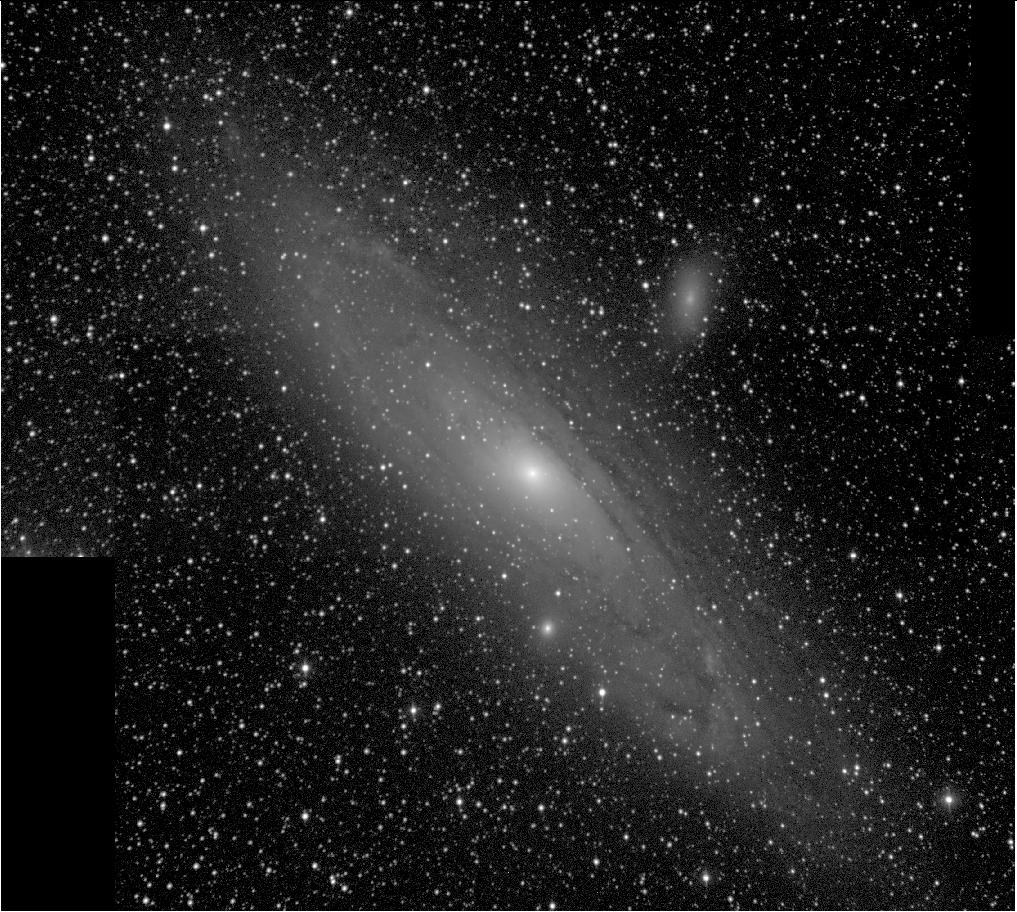

De Vaucouleurs Atlas Type: SA(s)b
Filter: B
Telescope: 0.076-m Televue refr.
North up , East left
Field Dimensions: 157.9 x 141.3 arcminutes
RC3 Type: SA(s)b
RSA Type: SbI-II
Surface Brightness Range Displayed: 17.0-27.0 mag per square arcsec
Absolute Blue Magnitude: -21.6
De Vaucouleurs Atlas Description:
As an Sb galaxy, M31 is certainly a well-defined example. However, this does not mean that its structure is easy to intepret. The high inclination makes it difficult to see the organization of its spiral structure well. Sandage (1961) notes that the spiral arms of M31 are similar to those of NGC 2841 , but are thicker and less well-defined. Later studies (e.g., Unwin 1980a,b) showed that HI is distributed mostly near and outside the edge of the bright inner part of the galaxy. In fact, the most conspicuous morphology in HI maps is that of a large ring (see also Kraemer et al. 2002).
Kalnajs (1974) analyzed the distribution of HII regions in M31 and suggested that its spiral structure could be interpreted as a single leading arm, possibly excited in a retrograde encounter with M32. Similar analyses by Simien et al. (1978) and Puerari and Dottori (1992) supported this conclusion. On the other hand, Braun (1991) analyzed the neutral gas and identified two trailing arms over much of the disk (0.5-27 kpc) that merge in the outer regions. Spiral structure is also detectable in the dust lanes of M31 . These are shown in an unsharp masked optical image by Walterbos and Kennicutt (1988), who also note the lack of a coherent one or two-armed pattern.
Inner isophotes of M31 show slight twisting relative to the outer disk isophotes, leading to the idea of a weak bar or triaxial bulge. Stark (1977) shows a model of a triaxial bulge in the form of a prolate ellipsoid whose major axis is tipped ~45o to the disk major axis. Neither the apparent ring in the outer disk nor the central bar are conspicuous enough in blue light to merit recognition in the classification of M31 .
De Vaucouleurs (1958b) carried out detailed surface photometry that largely superceded previous results. In particular, de Vaucouleurs showed that the bulge of M31 can be modeled well using the r1/4 law established previously for elliptical galaxies .